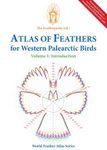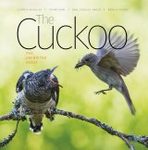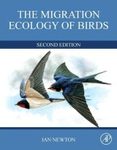By: Peter Prokosch(Editor)
232 pages, colour photos, colour illustrations, colour maps
![The East Atlantic Flyway of Coastal Birds The East Atlantic Flyway of Coastal Birds]()
Click to have a closer look
About this book
Customer reviews
Related titles
About this book
Embark on an extraordinary journey along the East Atlantic Flyway, a spectacular route traversed by millions of shorebirds as they navigate between their breeding grounds in the Arctic and their wintering destinations in Europe and Africa. Covering up to 16,000 kilometres twice a year, these remarkable creatures engage in one of the most awe-inspiring natural spectacles on Earth.
In this captivating book, we accompany a team of intrepid ornithologists as they unravel the mysteries of shorebird migration. Through their interwoven stories, we gain a profound understanding of the birds’ amazing migratory patterns, their breeding and wintering habitats, and their crucial stopover locations.
Delve into the fascinating world of bird biology and behaviour, where we witness the marvels of blue-green coastal landscapes, the stark beauty of tundra, and the untamed wilderness that these birds call home. Along the way, we discover the essential role of education, community involvement, advocacy, and international cooperation in conserving the precious sites along the flyway.
Customer Reviews (2)
-
Inspiring essays on the creation of the East Atlantic Flyway
By
Gehan de Silva Wijeyeratne
12 Sep 2024
Written for Hardback
This is not an easy book to categorise as it lies somewhere between memoir and conservation history with the backdrop being birds and the East Atlantic Flyway. There are contributions from 21 people with the editor Peter Prokosh being also the lead author of some of the 18 essays that take up 212 pages of this 232-page book. If I had to summarise the book in a word, it would be 'inspiring'. The essays vary in style between popular science and reminiscences. But they also provide useful clues to early career scientists and conservationists on how different paths can be followed to achieve an international impact. At one level, it is inspiring how in many cases a surprisingly small handful of individuals engaged in international collaborations have achieved so much. They have brought in vast swathes of land in multiple countries into protected areas of various designations. At another level it also provides an insight into the various levers that can be used, ranging from national and international committees to various pieces of national and international regulations, to achieve amazing outcomes.
The book is in a large format (height 28.5 cm × width 22 cm), a little shorter than A4. This helps with the extensive usage of photographs, maps, charts and tables. But it is mainly images which dominate the non-text elements. Although the essays have science in them, they are written in a conversational style and lend themselves to being the kind of light read one might like to engage in whilst sitting on public transport on the commute to work. With this in mind, I would have preferred a smaller shape of book.
Taken as a whole, the book draws together the importance of the coastal areas across different countries and continents for the conservation of migratory birds, especially waders and waterfowl. Tens of millions of square kilometres need to be protected. This book provides an insight into pioneering scientific studies which helped to understand the flyways and key breeding and wintering sites which needed to be prioritized for protection. No one essay is better than the other. But I will illustrate the variety of the essays with a few examples. Peter Prokosch writes an essay on how the Great Artic Reserve was born. A collaboration between Western European scientists and Russian scientists of a sort which he himself concludes is hard to imagine in 2024. It's a story which lends itself to being made into a docudrama and the essay is lavishly illustrated with historical photographs including the team inside a MI-8 helicopter. Amazingly, from idea to realization, it had taken only four years.
Another essay is on the Parc National du Banc d'Arguin in Mauritania. A text box includes an interview with William Dick who as part of a university research team drove overland from England to the wader study site in Mauritania. With no email and internet at that time, organizing the expedition was a logistical nightmare and not helped by the absence of roads to the sites they studied. It's an exciting expedition adventure story whilst echoing the theme in many essays of the pioneering fieldwork carried out by scientists before the days of electronic satellite tags revealed the path of migrants. I especially enjoyed some of these essays as I have my own share of adventures including being out at sea looking for cetaceans and pelagic seabirds off the coast of Kalpitiya in Sri Lanka where if anything had gone wrong there would have been no way for anyone to find me and my boatman. I suspect many birders who travel around the world in search of lifers can in their own way relate to the adventures of scientists.
The essay on what has been learnt since 1973 about Red Knots and Bar-tailed Godwits outlines modern studies and illustrates the migratory routes of the six subspecies of red Knots but also shows how the subspecies formed from two main lineages diverging 34,000 years ago. The story is complicated by subspecies having periods of contact (admixture). Even with modern DNA sequencing techniques and geolocators, there is still much to be learnt about the world's biodiversity. This book is not just for birders and wader and waterfowl enthusiasts. I am sure the essays will inspire scientists and conservationists in many other taxonomic groups to find their own adventures.
1 of 1 found this helpful
-
Was this helpful to you? Yes No
-
Great conservation successes
By
Keith
1 Dec 2024
Written for Hardback
The East Atlantic Flyway is a very important route through which millions of waders travel from their breeding grounds in or near the Arctic Circle to their wintering areas in Europe and further south. The east coast of the UK is part of this route, but when you read this book, you begin realising that we are just a small part of a huge picture which sees birds using coastal habitats across many countries. Many of the best areas are found in the Wadden Sea which covers 4500 sq km of the Netherlands, Germany and Denmark, making the world’s largest expanse of continuous mudflats and covering an area not much smaller than all of Norfolk – not just the coast! To give you an idea of its value to birds, around ten million waders and wildfowl use the area, which is greater than all our coastal areas combined.
The book has been edited by Peter Prokosch, a leading German biologist who has worked on waders and wetlands for most of his long career. He has authored 11 of the 18 chapters in this book, but it also includes contributions from 28 other specialists from ten countries.
There is a clue in the subtitle of this work (50 Years of Exciting Moments in Nature Conservation and Research) that it is primarily a celebration of the achievements by those who have worked hard to protect the birds and the areas that they rely on. However, it is also a celebration of the things that have been discovered. For example, until recently we had only a basic understanding of just how amazing waders are at undertaking tremendous migrations. One chapter looks at the ability of Knots to travel 5000 km in a single journey at heights of up to 5 km. It then shows that in the UK we receive birds from two races: icelandica from Greenland and Canada, and canutus from Russia. Indeed, it seems that the icelandica birds only developed that migration pattern 3000 years ago, and presumably wintered in North America previously. Similarly, this chapter investigates Bar-tailed Godwits, and their ability to fly 11,000 km in one session, and being able to become highly obese just before their main migration but still being able to fly like a top-level athlete. Surely that’s a skill that many humans would love to copy!
There are also stories away from Europe, looking at the protection of key wader breeding grounds in Iceland, Greenland and Canada along with challenges to save important wintering areas in Africa, and especially in Mauritania. By comparison with our European counterparts the UK is not mentioned that often. The truth is that we are simply a much smaller part of a huge migration movement than many of us might have imagined. Back in the 1970s, it was initially UK enthusiasts who started to promote wader-ringing methods that others would later adopt, but our European counterparts have been at the forefront of much of the work since then.
Although this book is a celebration of what has been achieved over fifty years there is plenty of material to help you understand what birds are using the flyway, and where specifically. With climate change being a growing challenge for many species, birds need friends in European governments right now – and few groups need them more than waders and wildfowl.
2 of 3 found this helpful
-
Was this helpful to you? Yes No
By: Peter Prokosch(Editor)
232 pages, colour photos, colour illustrations, colour maps





































